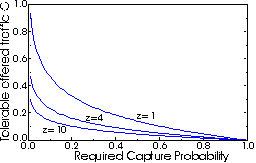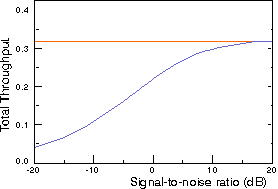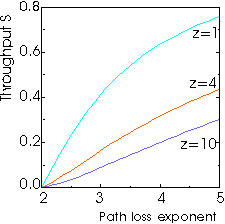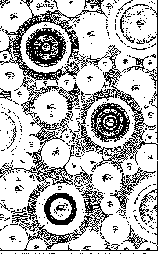
 |
JPL's Wireless Communication Reference WebsiteChapter: Data Networks
|

Figure: The maximum acceptable offered traffic load (in message attempts per time slot per unit area)
for a certain required probability of success at unity distance. Various receiver thresholds.

Figure: Total throughput (in message attempts per time slot per unit area)
versus signal to noise ratio at unity distance.

Figure: Total throughput (in message attempts per time slot per unit area)
versus path loss law ("20 log d" to "50 log d").
Hence, every packet sees an infinitely large interference power, so it has zero probability to capture the receiver.

|
For centuries, astronomers have wondered why it gets dark at night.
Assuming that
This can be understood as the intensity of the light from any star attenuates according to free space loss, i.e., inversely proportional to the square of distance, while the angular surface area at which we observe the star also decreases with distance squared. As a result, the amount of light per steradian remains independent of the distance of the star. Whether we look at the sun or at any remote star, the intensity of light would be equal. Now under the conditions mentioned, in any direction we see a star (almost surely, i.e., with probability one). |